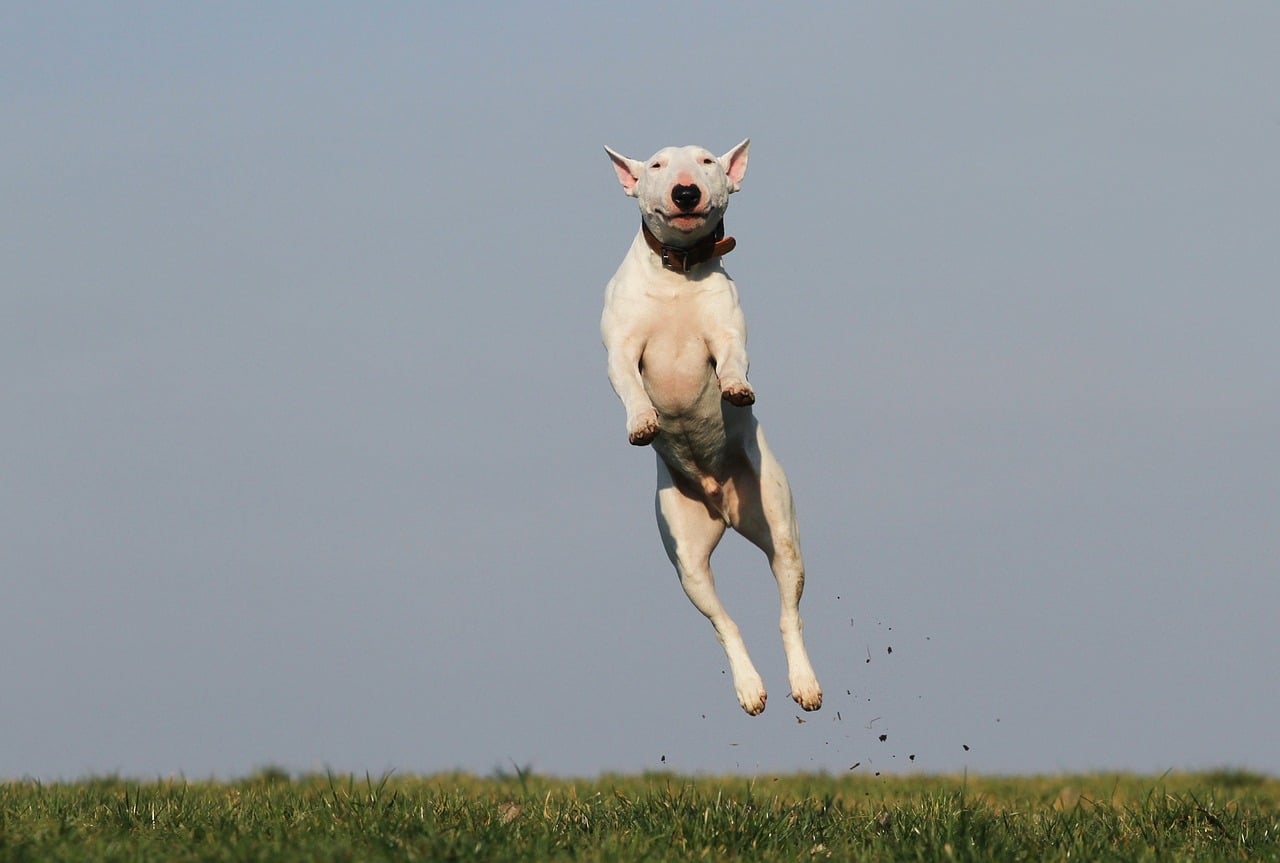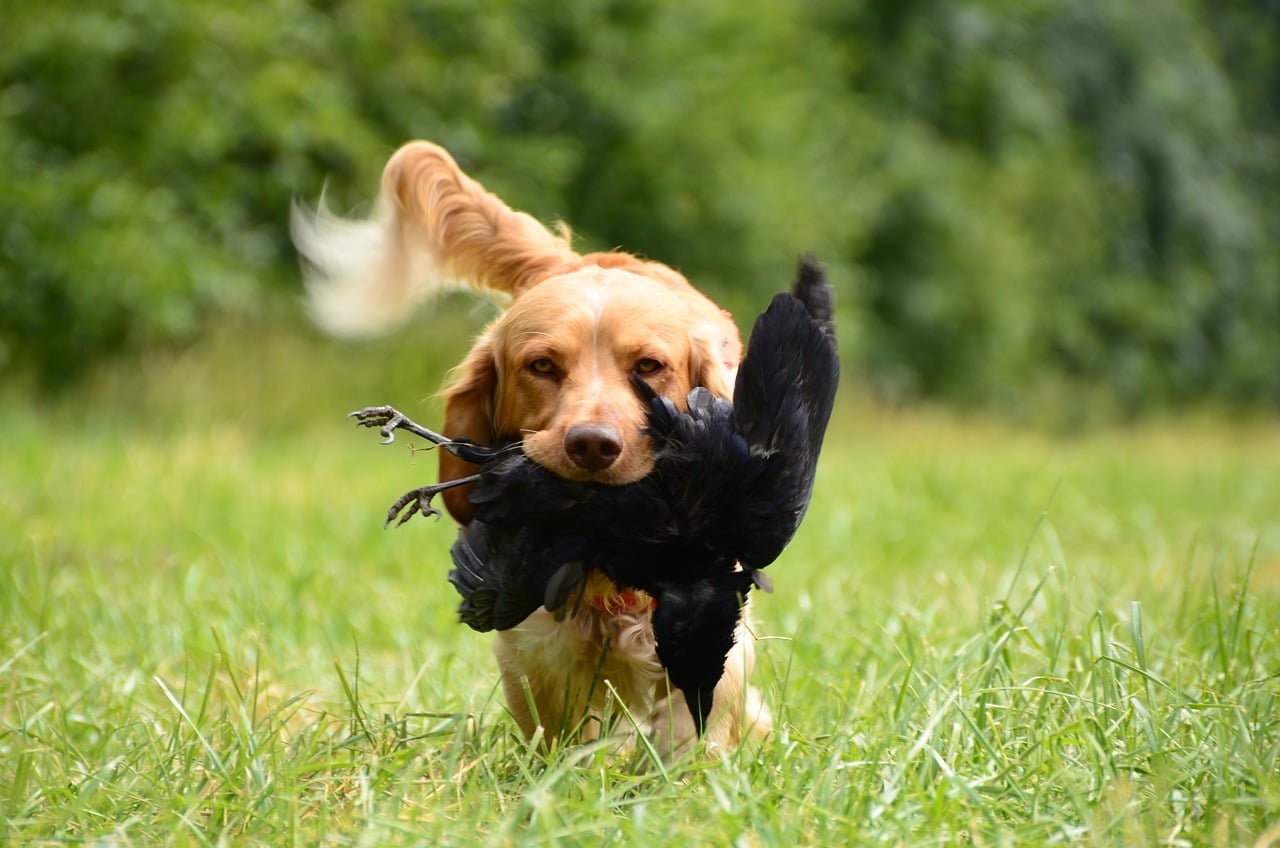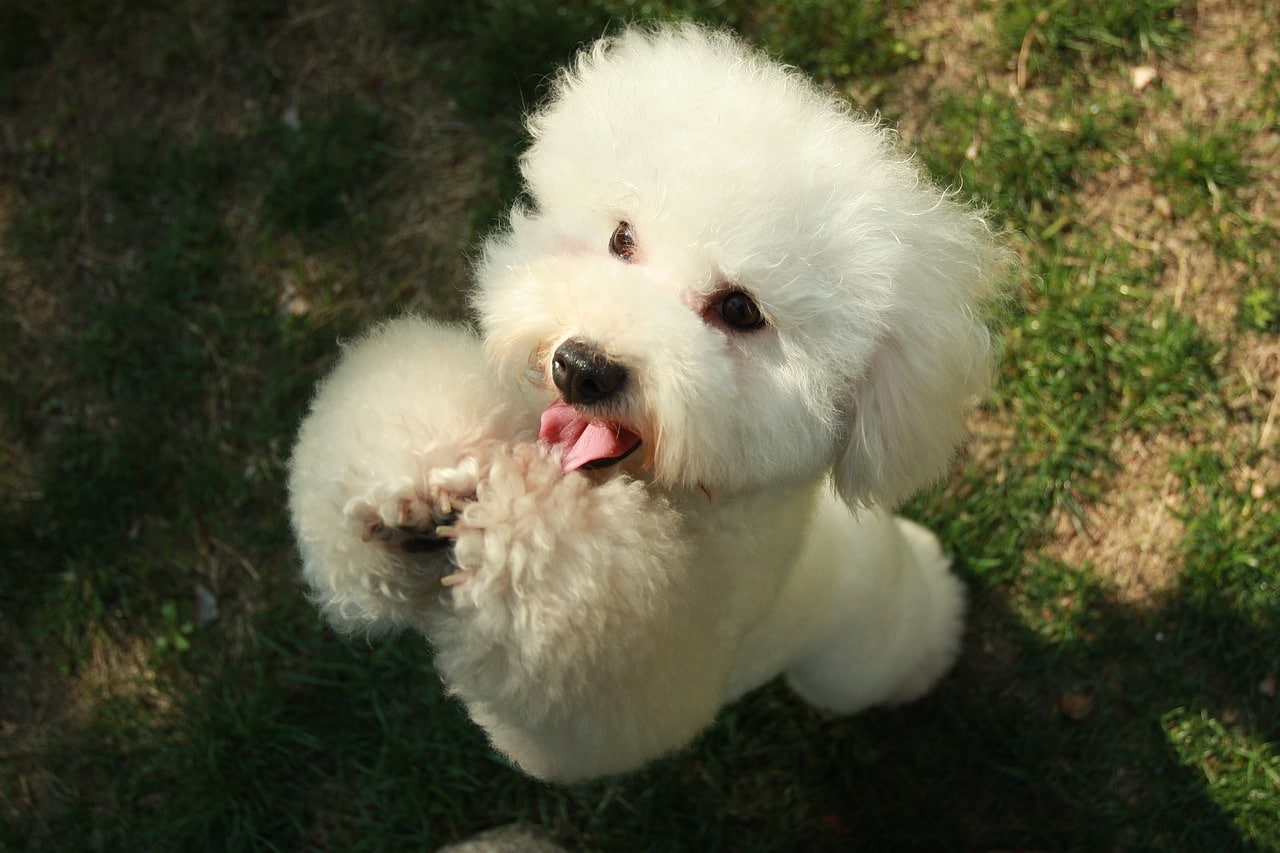Are you struggling with your dog's behavior and desperately seeking a solution? Look no further than positive reinforcement training! In this article, we will explore the power of positive reinforcement in modifying your dog's behavior. With a focus on rewarding desired behaviors rather than punishing unwanted ones, this training method is highly effective and promotes a harmonious relationship between you and your furry friend. Discover how positive reinforcement training can transform your dog's behavior and create a lasting bond based on trust and understanding.
What is Positive Reinforcement Training?

This image is property of pixabay.com.
Definition of Positive Reinforcement Training
Positive reinforcement training is a scientifically-based approach to dog training that focuses on rewarding desired behaviors rather than punishing unwanted behaviors. It involves using rewards such as treats, praise, and toys to reinforce good behavior and encourage dogs to repeat these behaviors in the future. This type of training relies on the principles of operant conditioning and the understanding that dogs are more likely to learn and retain information when they associate it with positive experiences.
Principles of Positive Reinforcement Training
Positive reinforcement training is grounded in several key principles. First and foremost, it emphasizes the use of rewards to motivate and reinforce desired behaviors. This means that when a dog exhibits a behavior that is desired, they are immediately rewarded with something they find valuable. Additionally, positive reinforcement training prioritizes consistency and clear communication between the trainer and the dog. It also emphasizes the importance of setting realistic goals and expectations, as well as understanding the individual needs and capabilities of each dog.
Benefits of Positive Reinforcement Training
Positive reinforcement training offers numerous benefits for both dogs and their owners. One of the main advantages of this training method is that it strengthens the bond between the dog and their owner. By using rewards and positive experiences, dogs learn to trust and respect their owners, leading to a more harmonious relationship. Positive reinforcement training also promotes mental stimulation and reduces boredom, as dogs are constantly learning and engaging in mentally challenging tasks. Moreover, this training approach helps to create well-behaved dogs who are confident, happy, and well-adjusted.
Understanding Behavioral Modification for Dogs
Common Behavioral Issues in Dogs
Behavioral issues are common among dogs and can present challenges for both the dog and their owner. Some of the most common behavioral issues in dogs include aggression, separation anxiety, excessive barking, fear and phobias, and leash pulling. These issues can range from mild to severe and may greatly impact the overall quality of life for both the dog and their human companions.
Causes of Behavioral Issues
Behavioral issues in dogs can be caused by various factors. Some dogs may have genetic predispositions to certain behaviors, while others may develop issues as a result of improper socialization or traumatic experiences. Environmental factors, such as a lack of mental stimulation, inconsistent training, and changes in routine, can also contribute to the development of behavioral issues. It is important to understand the root causes of these problems in order to effectively address and modify the dog's behavior.
Why Traditional Training Methods May Not Work for Behavioral Modification
Traditional training methods, which often rely on punishment and dominance-based techniques, may not be effective for behavioral modification in dogs. These methods can lead to fear, anxiety, and aggression in dogs, exacerbating existing behavioral issues. Punishment-based training can also damage the bond between the dog and their owner, making it difficult to establish trust and effectively address the underlying causes of the problem. Positive reinforcement training, on the other hand, creates a safe and supportive environment that fosters behavior change without compromising the well-being of the dog.
The Science behind Positive Reinforcement Training
Operant Conditioning and Reinforcement
Positive reinforcement training is grounded in the principles of operant conditioning. Operant conditioning is a learning process in which behavior is shaped by consequences. Positive reinforcement refers to the practice of rewarding desired behaviors to increase the likelihood of their recurrence. By pairing a behavior with a positive stimulus, such as a treat or praise, dogs learn to associate the behavior with a positive outcome and are more likely to repeat it in the future.
Positive Reinforcement and Neurobiology
Positive reinforcement training also has an impact on the neurobiology of dogs. When a dog receives a reward, such as a treat, their brain releases neurotransmitters like dopamine, which are associated with feelings of pleasure and reward. This reinforcement strengthens the neural pathways associated with the behavior being rewarded, making it more likely that the dog will exhibit that behavior again in the future. Over time, this neural rewiring can lead to lasting behavior change.

This image is property of pixabay.com.
How Positive Reinforcement Affects Behavior
Positive reinforcement training has a profound effect on a dog's behavior. By rewarding desired behaviors, dogs learn what is expected of them and are motivated to repeat those behaviors. Positive reinforcement helps to reinforce good habits, making them more likely to become ingrained in a dog's everyday behavior. This type of training also helps to redirect and replace unwanted behaviors with alternatives that are more appropriate and desirable. Through positive reinforcement, dogs become more responsive, obedient, and well-behaved.
Key Techniques in Positive Reinforcement Training
Clicker Training
Clicker training is a popular technique in positive reinforcement training. It involves using a small device called a clicker to provide a distinct and consistent sound that signifies to the dog that they have performed the desired behavior. The clicker is immediately followed by a reward, such as a treat, which strengthens the association between the behavior and the reward. Clicker training is effective because the sound of the clicker can be delivered at the exact moment the desired behavior occurs, providing clear and instant feedback to the dog.
Reward-based Training
Reward-based training is at the core of positive reinforcement training. It involves using rewards, such as treats, toys, or praise, to reinforce desired behaviors. When a dog performs a behavior that is desired, they receive a reward. This positive experience strengthens the connection between the behavior and the reward, making it more likely that the dog will repeat the behavior in the future. Reward-based training focuses on setting clear expectations and consistently rewarding the dog for meeting those expectations.
Marker Training
Marker training, also known as "mark and reward" training, utilizes a verbal cue, such as the word "yes" or a clicker, as a marker to indicate to the dog that they have performed the desired behavior. The marker is immediately followed by a reward, creating a clear connection between the behavior and the reward. Marker training helps to provide precise feedback to the dog, allowing for more effective communication and faster learning.

This image is property of pixabay.com.
Capturing and Shaping Behaviors
Capturing and shaping behaviors involves rewarding incremental progress towards the desired behavior. This technique is particularly useful when teaching complex behaviors or when a dog exhibits an approximation of the desired behavior. By rewarding small steps or moments that resemble the desired behavior, dogs learn to gradually achieve the final behavior through shaping. This technique requires patience and careful observation, but it can be highly effective in training dogs to perform complex tasks or behaviors.
Choosing the Right Rewards and Reinforcements
Types of Rewards
When practicing positive reinforcement training, it is important to choose rewards that motivate and excite your dog. Different dogs may have different preferences, so it is essential to experiment with a variety of rewards to find what works best for your dog. Some dogs may be highly food motivated and respond well to treats, while others may be more motivated by play or praise. By offering rewards that are valuable to your dog, you can reinforce their good behavior more effectively.
Timing and Consistency of Rewards
Timing and consistency are crucial when using positive reinforcement training. Rewards should be given immediately after the desired behavior occurs so that the dog can clearly associate the reward with the behavior. Delayed or inconsistent rewards can confuse the dog and make it harder for them to understand which behavior is being reinforced. By consistently rewarding the desired behavior, you are reinforcing the connection between the behavior and the positive outcome, leading to faster and more effective learning.
Determining High-Value Rewards for Your Dog
High-value rewards are treats or rewards that hold a special appeal to your dog. These rewards are typically more motivating than regular treats and can be particularly useful in challenging training scenarios or when dealing with highly distractible dogs. Determining what qualifies as a high-value reward will depend on your individual dog's preferences. Some examples of high-value rewards include small pieces of cooked chicken, cheese, or freeze-dried liver. By using high-value rewards strategically, you can increase your dog's motivation and engagement during training sessions.
Creating a Positive Training Environment

Setting Clear Goals and Expectations
When practicing positive reinforcement training, it is important to set clear goals and expectations for your dog. Define what behaviors you want to teach or modify and break them down into achievable steps. By setting clear goals, you can create a roadmap for training and measure your dog's progress. Additionally, it is important to communicate these expectations to your dog consistently, through verbal cues or hand signals, so they understand what is expected of them.
Establishing a Consistent Routine
Consistency is key in positive reinforcement training. Dogs thrive on routine and predictability, so it is important to establish a consistent training schedule for them. Set aside dedicated time each day for training sessions, and be consistent with the use of verbal cues, rewards, and expectations. When the dog knows what to expect and when to expect it, they are more likely to engage and participate in training sessions. Consistency also helps to reinforce good habits and prevent behavioral issues from recurring.
Creating a Safe and Comfortable Space
Creating a safe and comfortable training space is essential for effective positive reinforcement training. Choose a quiet and distraction-free environment where you and your dog can focus and engage in training without interruptions. Make sure the space is free from potential hazards and provides enough room for your dog to move comfortably. Additionally, ensure that your dog has access to their basic needs, such as water and a comfortable resting area, to promote a positive and stress-free training experience.
Avoiding Common Pitfalls in Positive Reinforcement Training
Using Punishment or Negative Reinforcement
One of the main pitfalls to avoid in positive reinforcement training is the use of punishment or negative reinforcement. Punishment-based techniques, such as physical corrections or harsh verbal reprimands, can undermine trust and create fear and anxiety in dogs. Instead of punishing unwanted behaviors, it is important to redirect the dog's attention to a desirable alternative behavior and reward their compliance. Negative reinforcement, which involves removing an unpleasant stimulus when the dog performs the desired behavior, should also be avoided as it can lead to confusion and anxiety.

Over-reliance on Treats
While treats are a valuable tool in positive reinforcement training, it is important to avoid over-reliance on them. Over time, dogs can become dependent on treats and may not respond to commands or cues without the presence of a food reward. To prevent this, gradually reduce the frequency of treat rewards as your dog progresses in their training. Use other types of rewards, such as praise or play, to diversify and maintain motivation during training sessions. Remember, the goal should be to have a dog who listens and responds to your commands because they want to, not just for the promise of a treat.
Inconsistency in Training
Consistency is a fundamental principle of positive reinforcement training. Inconsistency in training can confuse the dog and hinder their progress. It is important to establish consistent rules, expectations, and rewards for your dog. This means using the same verbal cues or hand signals, rewarding the same behaviors consistently, and maintaining a regular training schedule. The more consistent you are in your training approach, the easier it will be for your dog to understand and learn what is expected of them.
The Role of the Trainer in Positive Reinforcement Training
Building Trust and Bond with the Dog
As a trainer utilizing positive reinforcement techniques, building trust and bond with your dog is paramount. Dogs are more likely to learn and follow instructions when they have a strong and trusting relationship with their trainer. Spend quality time bonding with your dog outside of the training sessions, engaging in activities they enjoy, and providing plenty of positive experiences. By building trust, you create an environment where your dog feels safe to learn and experiment with new behaviors.
Understanding Canine Body Language
Understanding canine body language is crucial in positive reinforcement training. Dogs communicate through body language and facial expressions, and being able to read and interpret their signals can help you effectively respond to their needs and emotions. Learn to recognize signs of stress, fear, or anxiety in your dog, as well as the subtle cues that indicate they are comfortable and engaged. This knowledge allows you to tailor your training approach to suit your dog's individual needs and create a positive and comfortable training environment.
Effective Communication and Timing
Effective communication and timing are essential in positive reinforcement training. Dogs live in the present moment and respond best to immediate feedback. Therefore, it is crucial to provide clear and timely feedback when your dog exhibits a desired behavior. Use verbal cues or markers consistently and deliver rewards promptly. Avoid confusion by using concise and specific cues that are easily distinguishable for your dog. By communicating effectively and providing timely feedback, you can enhance your dog's learning experience and maximize the effectiveness of positive reinforcement training.
Applying Positive Reinforcement Training to Specific Behavioral Issues
Aggression
Aggression in dogs is a complex issue that requires a thoughtful and comprehensive approach. Positive reinforcement training can be highly effective in addressing aggression by redirecting and replacing aggressive behaviors with alternative behaviors that are more appropriate and desirable. For example, teaching a dog to sit or lie down on command can redirect their focus and provide an outlet for their energy. It is important to work with a professional trainer who specializes in aggression to develop a tailored training plan that addresses the specific triggers and underlying causes of the aggression.
Separation Anxiety
Separation anxiety is a common behavioral issue in dogs and can lead to destructive behaviors and distress for the dog and their owner. Positive reinforcement training can help alleviate separation anxiety by gradually desensitizing the dog to being alone and rewarding calm and relaxed behaviors. This can be achieved through a process known as counter-conditioning, where the dog's emotional response to being alone is gradually changed through positive experiences. It is important to start with short periods of separation and gradually increase the duration as the dog becomes more comfortable.
Excessive Barking
Excessive barking can be a nuisance behavior and may be triggered by various factors, such as boredom, anxiety, or territorial instincts. Positive reinforcement training can help address excessive barking by teaching the dog alternative behaviors and rewarding quiet and calm behaviors. For example, teaching a "quiet" command and rewarding the dog for remaining calm can help them learn to control their barking. It is important to identify and address the underlying cause of the barking, such as providing mental and physical stimulation, to prevent the behavior from recurring.
Fear and Phobias
Fear and phobias in dogs can be challenging to overcome, but positive reinforcement training can help desensitize and counter-condition dogs to their fears. By gradually exposing the dog to the feared stimuli in a controlled and positive manner, while providing rewards and reassurance, they can learn to associate the previously feared object or situation with positive experiences. It is crucial to proceed at the dog's own pace and avoid overwhelming them, as this can further reinforce their fears.
Leash Pulling
Leash pulling is a common issue during walks and can make walks unpleasant and challenging for both the dog and their owner. Positive reinforcement training can teach dogs to walk calmly on a loose leash by rewarding them for walking without pulling. Techniques such as "red light, green light" or stopping and rewarding the dog for walking by your side can help to discourage pulling. Consistency and regular practice are key in addressing leash pulling, as well as ensuring that the dog's physical and mental exercise needs are met.
Case Studies: Successful Behavioral Modification through Positive Reinforcement Training
Case Study 1: Aggressive Dog
In this case study, a dog exhibiting aggressive behaviors towards other dogs was successfully rehabilitated through positive reinforcement training. The trainer initially focused on managing the dog's environment to prevent aggressive encounters and provided behavioral cues that redirected the dog's attention away from potential triggers. Through consistent reward-based training, the dog learned to associate other dogs with positive experiences and gradually became more comfortable and relaxed in their presence. Over time, the dog's aggressive behavior diminished, and they were able to interact peacefully with other dogs.
Case Study 2: Fearful Rescue Dog
A fearful rescue dog, suffering from anxiety and fear-based behaviors, underwent positive reinforcement training to overcome their fears and regain confidence. The trainer used counter-conditioning techniques to gradually expose the dog to the previously feared stimuli, such as unfamiliar people and loud noises, while providing rewards and reassurance. With time and patience, the dog's fear responses decreased, and they learned to associate previously feared situations with positive experiences. The dog's overall anxiety and fear were significantly reduced, allowing them to enjoy a more relaxed and fulfilling life.
Case Study 3: Reactive on Leash
A dog displaying reactive behavior, such as barking and lunging at other dogs while on a leash, was successfully rehabilitated through positive reinforcement training. The trainer focused on creating distance from other dogs to keep the dog under threshold, where they were still able to remain calm and attentive to commands. Through consistent rewards for calm behavior and redirection techniques, the dog gradually became more comfortable and less reactive on leash. With time and practice, the dog was able to walk calmly past other dogs without exhibiting reactive behaviors.
Positive reinforcement training offers a humane and effective approach to behavioral modification for dogs. By focusing on rewards, clear communication, and consistency, this training method can create well-adjusted and obedient dogs. Whether addressing aggression, separation anxiety, excessive barking, fear, or leash pulling, positive reinforcement training provides a scientifically-backed solution for modifying unwanted behaviors. Through case studies, it is evident that positive reinforcement training can successfully transform the lives of dogs and their owners, fostering a stronger bond and creating a harmonious relationship based on trust, respect, and mutual understanding.


